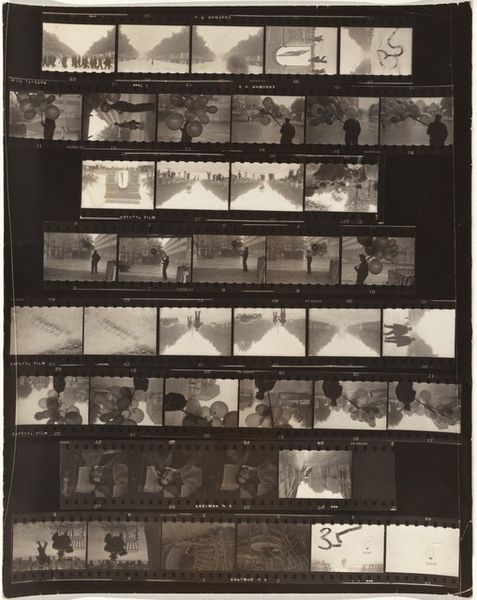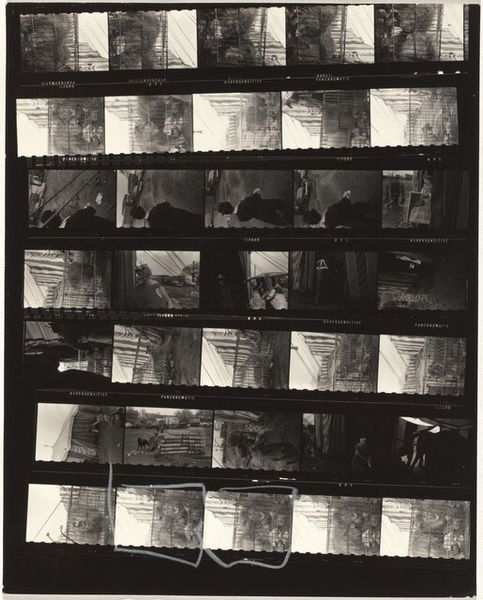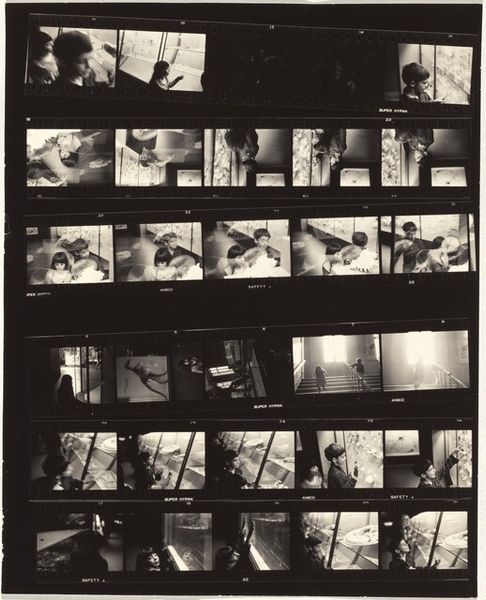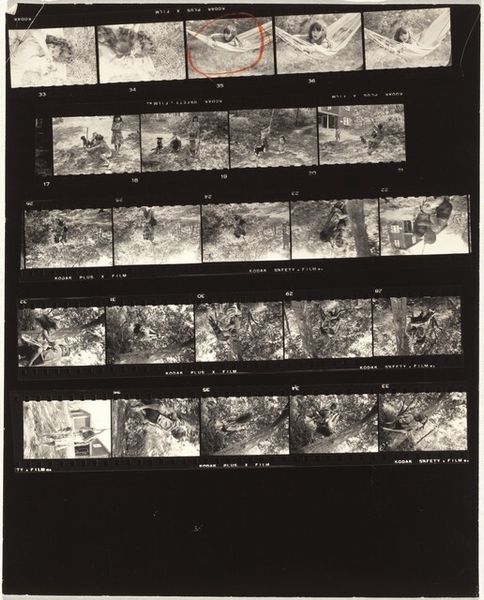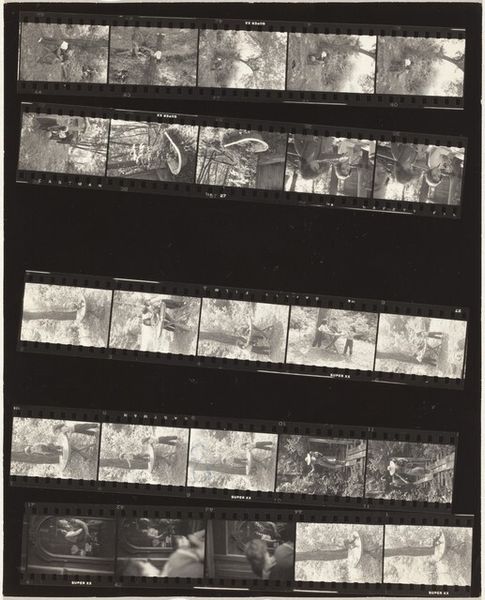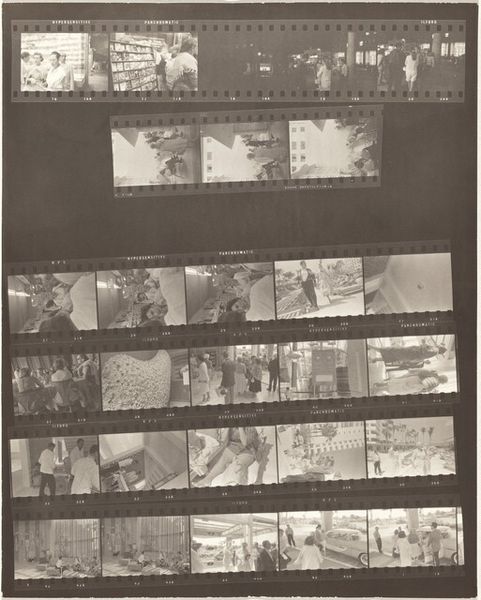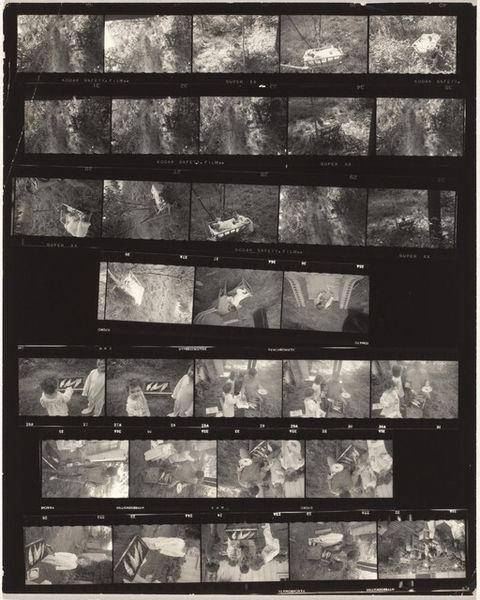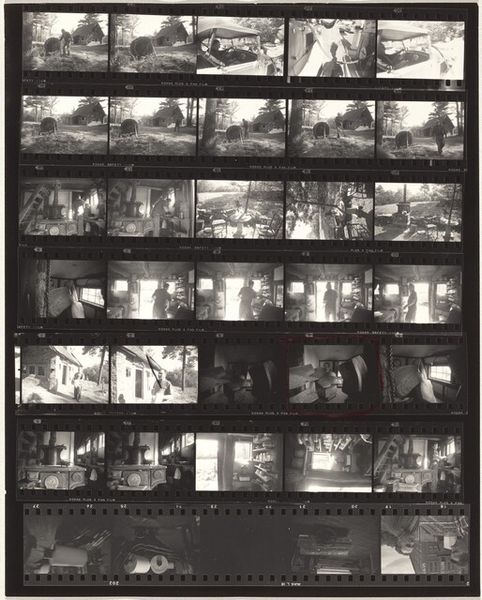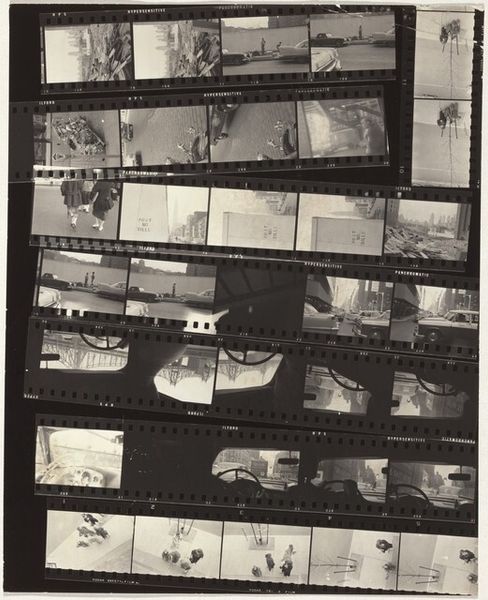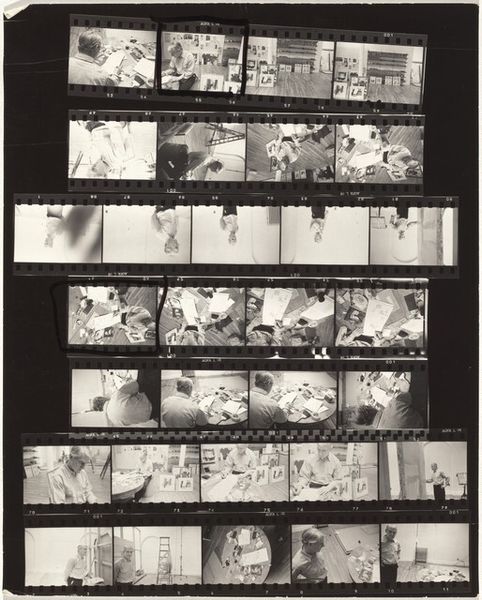
contact-print, photography
#
portrait
#
contact-print
#
street-photography
#
photography
#
modernism
#
realism
Dimensions: sheet: 25.3 x 20.3 cm (9 15/16 x 8 in.)
Copyright: National Gallery of Art: CC0 1.0
Curator: Here we have a contact sheet from Robert Frank, dating to 1954. The photographs are labeled "Mary in black coat--New York City no number." Frank is celebrated for his raw, unflinching look at American society. What are your initial impressions? Editor: There's a vulnerability to it, isn't there? It's rough, unpolished, with these little glimpses of the woman's face caught between frames, giving it a stuttering kind of rhythm. The strong blacks and stark whites lend it a kind of anxiety. Curator: Frank aimed to capture the everyday. These sheets give insight into his shooting process, revealing what he chooses to omit, which speaks to the socio-cultural context he provides for the observer. Do you see a narrative thread, a story he wants to convey in this arrangement? Editor: The way these frames play off of one another suggests he's deliberately composing with light and shadow. I see the visual contrast within the strip, and wonder if it represents how the dark shadows on one part of the face juxtapose a softer aspect of her expression. How that affects us visually. Curator: Many view Frank’s images as stark critiques of the American Dream, but by observing these candid moments, one might glean an intimate portrayal, maybe challenging conventional societal norms? Editor: What strikes me are the deliberate, almost cinematic choices within such a simple composition. Frank used stark contrast and high grain to give these pictures more bite. Curator: Frank presented this not just as personal narrative but social commentary, making us confront the real. Editor: Indeed. Through visual rhythm, light, and focus, Robert Frank directs us towards an emotional understanding. Curator: A poignant glimpse of Frank’s lens on the American identity. Editor: And how he saw light in black and white.
Comments
No comments
Be the first to comment and join the conversation on the ultimate creative platform.
